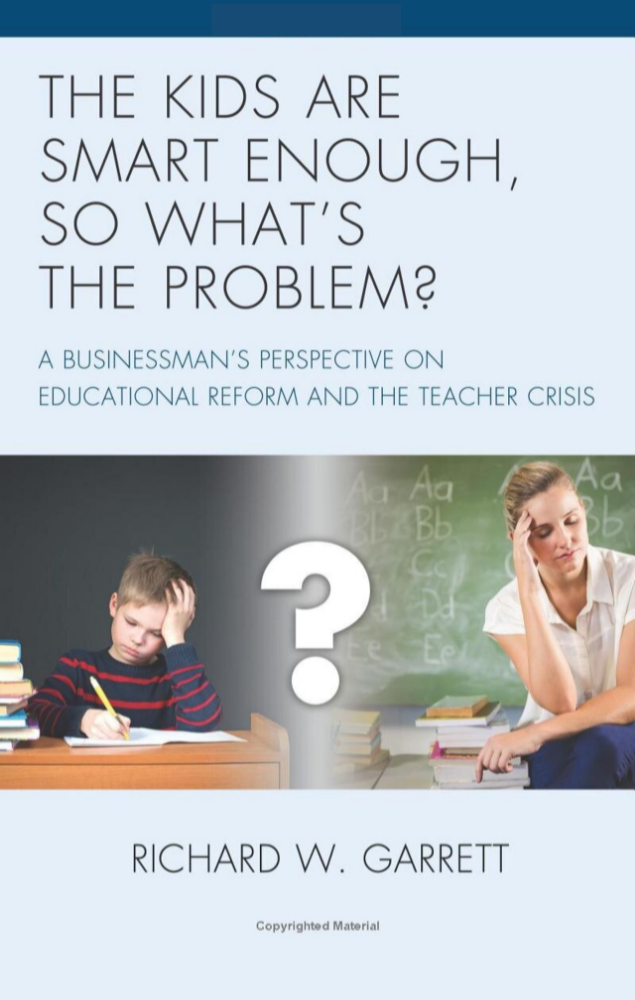Parents and Lack of Discipline Explain a Lot About Our Substandard Public Education
Let’s suppose I am being interviewed by a reporter and they ask, “After your many years of research what is the most important thing we can do to fix our K-12 public schools?” Here is what I would say:
As an author and educational researcher, I would like to provide my insights to help explain what is happening to education throughout the nation. We are having a terrible time educating our children. National test scores are far too low for a country with such a great educational legacy.
There are major issues with how we try to engage and educate our children and we need serious and widespread reform. One of the biggest issues is the inadequate behavior for a small minority of our students. Some of our parents send kids to school to a system they themselves do not appreciate or respect. This rubs off on the children and they show disdain for their teachers which leads to lack of respect and discipline problems. I talk with teachers who have engaged with some of their parents in demeaning and painful telephone calls or face-to-face meetings. One of my acquaintances is quitting the world of education because she is tired of being called a “bitch”.
Discipline Management Steals Valuable Classroom Time
A commonsense fact-if a teacher spends time managing their class, taking kids to the office, or facing constant interruption, the entire class loses; they are NOT teaching during his time. In my book, The Kids Are Smart Enough, So What’s the Problem? A Businessman’s Perspective on Educational Reform and the Teacher Crisis, Rowman and Littlefield, 2019, I work with a small team of teachers to define their school’s discipline problem.
The teachers begin by defining three types of students:
- Engaged – the kids that want to learn (31% of their class)
- Followers – not bad kids but don’t have a good internal compass (46%)
- Disruptive – these kids are the bad apples (23% – 6 kids for each class)
The teachers reluctantly admit that these 6 kids are “hard core” and that they cannot effectively manage them. Notice that the other children, the 77%, are just fine and the parents are fine; it’s the 6 bad apples that are the problem.
Can we quantitatively measure the impact of the disruptive children? We did; we defined an assessment method that used 44 classroom days to gather data. Here’s what we found: the 6 disruptive kids wasted 28% of classroom instructional time each day in every class. This means each student in the class loses this time as well. So, if a child attends one of these four classes for 5 days they only receive 3.6 days of education. No child or teacher can afford to lose this much instruction time; it’s no wonder our test scores are so low.
This tremendous loss of teaching time is a national issue. A 2004 study from Public Agenda, a Brooklyn thank tank, assesses that 80% of our classrooms have disruptive children – that’s 80,000 public schools. This study did not attempt to measure the amount of lost time.
What is different about these disruptive children? The study team conclude they are missing essential teachable skills that are needed to be successful in the classroom and life in general. We call these skills “character and grit”. We learn that character and grit are the antidote to discipline; if the children were properly trained in these skills, the discipline problems would disappear. Why are they missing these skills – the answer is inadequate parenting.
We cannot tolerate such a loss in time; these disruptive students must either change or be removed from the classrooms. If they choose to act out and are not interested in learning, they must get out of the way of the children who do want to learn and grow. This is a major reason so many teachers are leaving education; they cannot do their jobs. The other children in these classes know what is happening; if the schools allow this much disruption, they know the school administration is not serious about their own education. If the “other” parents understood how destructive the disruptive children are to their own children’s education, they would be “up in arms”.
Until we fix the lack of respect and discipline, we will not see the needed increase in faculty numbers. It is projected that by 2025 the nation will need 300,000 teachers each year, but the universities will only graduate about 100,000 that will go into teaching. This 200,000 annual shortfall will present huge challenges our public K-12 system and it’s too late to do much about it. A recent teacher satisfaction survey shows that only 12% of the teachers are “very satisfied” with their jobs; the lowest prior point was 33% in 1985. The headwinds are too strong for this to change quickly. No one wants to enter the classroom to teach and be humiliated by students who do not respect their teachers and who like to “act out” to express their anger and frustration, teachers, consequently, cannot do their jobs.
If you believe this is an exaggerated view of the system, I invite you to look at Lesson 4; it’s only 13 minutes long and you get the picture well before the end. It’s about an experienced teacher who is resigning from the Green Bay School System.
Write your congressman and tell them to investigate education. They will be surprised by what they find.
Richard W. Garrett PhD
Author and educational reform researcher




